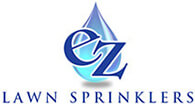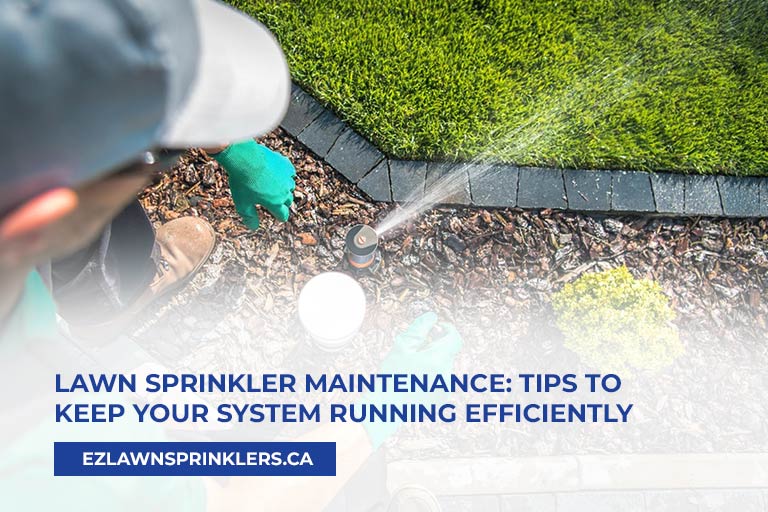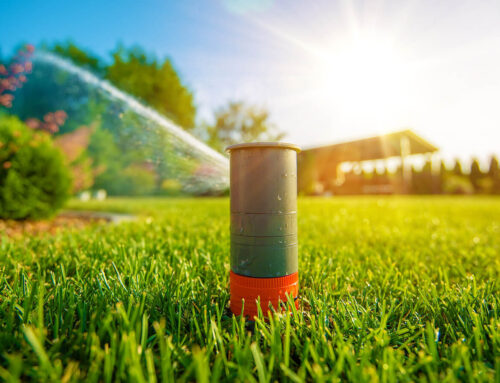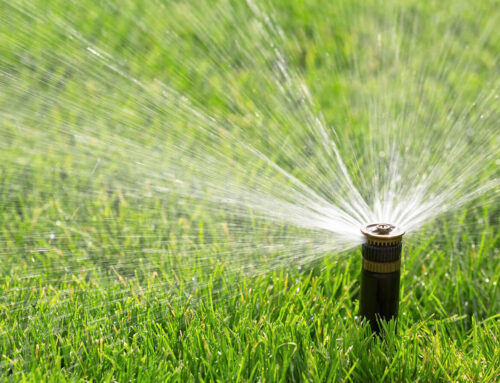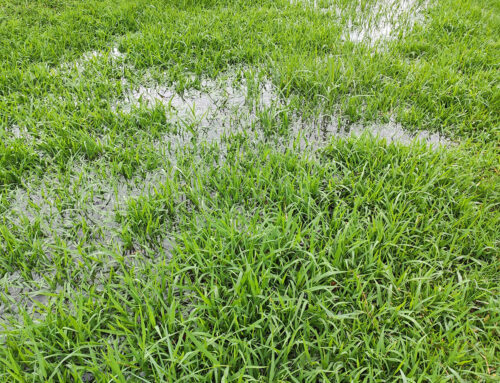Maintaining a lawn sprinkler system is not just about keeping your grass green – it’s also a crucial step in conserving water. According to the US EPA, some experts estimate that up to 50% of water used for irrigation is wasted due to factors like evaporation, wind, or runoff from inefficient systems.
This waste not only increases water bills but also strains our natural resources. By properly maintaining your sprinkler system, you can significantly reduce water waste and keep your lawn looking its best. Let’s explore some essential tips to ensure your system runs efficiently and effectively.
Identify and Understand Your Sprinkler System
Before performing maintenance, it’s crucial to know the specifics of your sprinkler system.
- Determine Your Sprinkler System Type
Start by identifying whether your system is automatic, manual, drip, or a combination. Each system type has unique characteristics and maintenance requirements. For example, automatic systems often feature programmable timers and sensors, whereas manual systems rely on manual operation for activation.
- Familiarize Yourself with Key Components
Understanding the components of your system is crucial. Key parts include:
- Sprinkler Heads: These come in various types, such as fixed spray, rotor, and impact heads. Each type is designed for different watering patterns and coverage.
- Valves and Pipes: Valves control water flow and are essential for regulating pressure and water distribution. Pipes connect the system and transport water to different zones.
- Backflow Preventers: These devices prevent contaminated water from flowing back into the main water supply, ensuring safe and clean irrigation.
- Map Out the System Layout
Knowing the layout of your sprinkler system helps with troubleshooting and maintenance. Identify the location of the main shut-off valve, which is critical in case of emergencies.Map out the zones as well, noting the position of each sprinkler head. This knowledge allows you to efficiently manage water distribution and make necessary adjustments to coverage areas.
Inspect and Clean Regularly
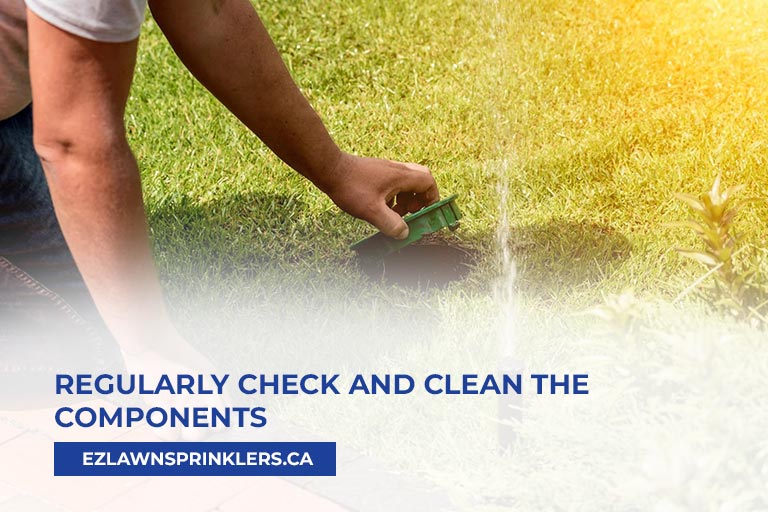
Routine inspection and cleaning are essential to keep your sprinkler system running smoothly and efficiently.
- Check for Leaks and Damage
Regularly inspect your system for visible signs of leaks or damage. Look for puddles of water around sprinkler heads, wet spots on the lawn, or any unusual water pooling. Leaks can waste water and lead to increased bills, while damaged components can disrupt proper coverage.
- Clean Nozzles and Filters
Clogged nozzles and filters can significantly affect water distribution. Periodically remove and clean the nozzles to ensure they are free of debris and mineral build-up. Similarly, clean or replace filters to maintain proper water flow and pressure. This can help you avoid calling for an emergency service for sprinkler repair in Toronto.
- Adjust Sprinkler Heads
Ensure that sprinkler heads are properly adjusted to cover the intended areas. Misaligned or obstructed heads can result in uneven watering and dry spots. Check that the heads are not blocked by grass or debris and that they are positioned at the correct height for optimal performance.
- Examine Valves and Controllers
Inspect valves for proper operation and listen for any unusual sounds that might indicate a problem. Verify that controllers and timers are set correctly and functioning as intended. Any malfunctions in these components can lead to inefficient watering schedules.
Adjust Seasonally
Seasonal adjustments are crucial for optimizing your sprinkler system’s performance throughout the year.
- Modify Watering Schedules
Adjust your watering schedules based on seasonal changes. In cooler months, reduce watering frequency as grass and plants require less water. During hot, dry periods, increase watering to meet the higher demands of your landscape. Many systems allow for easy adjustments through timers or smart controllers to accommodate seasonal variations.
- Prepare for Winterization
In colder climates, winterizing your sprinkler system is essential to prevent damage from freezing temperatures. Drain water from the system and blow out the remaining water using an air compressor. This prevents pipes from freezing and bursting, which can lead to costly repairs.
- Perform Spring Start-Up Procedures
As temperatures rise, prepare your system for the growing season. Flush the system to remove any debris that may have accumulated over the winter. Inspect each component for damage and make any necessary repairs before resuming regular watering. This ensures that your system operates efficiently from the start of the season.
Diagnose and Fix Common Problems
Identifying and addressing common issues promptly can prevent more serious problems with your sprinkler system.
- Identify Uneven Watering
Uneven watering often results from misaligned or clogged sprinkler heads. Check for dry spots or areas with excessive water and adjust the heads accordingly. Ensure that the system provides uniform coverage by running a test cycle and observing the distribution.
- Address Dry Spots and Over-Watering
Dry spots can occur due to low water pressure or blockages in the system. Inspect and clear any obstructions in the sprinkler heads or pipes. Conversely, over-watering may be due to a malfunctioning timer or controller. Adjust the settings or replace faulty components to correct the issue.
- Resolve Clogged Nozzles and Low Water Pressure
Clogged nozzles can be cleaned by removing and rinsing them. For persistent clogs, soak the nozzles in a vinegar solution to dissolve mineral buildup. Low water pressure may indicate a leak or an issue with the water supply. Check for leaks in the system and ensure that the water source is providing adequate pressure.
- Fix Electrical and System Control Issues
If your system’s controller or timer isn’t functioning correctly, it may lead to irregular watering schedules. Test the system’s electrical components and replace any faulty wiring or connections. Ensure that the controller settings are correctly programmed to match your irrigation needs.
Upgrade to Smart Irrigation Technology

Upgrading to smart irrigation technology can significantly improve the efficiency and effectiveness of your sprinkler system.
- Adopt Smart Controllers
Smart controllers automatically adjust watering schedules based on real-time data such as weather forecasts, soil moisture levels, and plant needs. These controllers use advanced algorithms to optimize watering, reducing water waste and ensuring your landscape receives just the right amount of hydration.
- Integrate Sensors for Enhanced Efficiency
These sensors provide valuable data to the smart controller, allowing it to make precise adjustments based on current weather conditions. This integration ensures that your system operates with minimal water waste and maximum effectiveness.
- Utilize Mobile Apps for Remote Management
Many smart irrigation systems offer mobile apps that enable you to monitor and control your system from anywhere. With these apps, you can easily adjust settings, manage schedules, and receive notifications about system performance, providing greater flexibility and convenience.
Utilize Professional Services
While DIY maintenance is valuable, professional services are crucial for comprehensive care and complex issues.
- Determine When to Hire a Professional
Knowing when to call a professional is important to maintaining your system’s efficiency. If you encounter persistent problems, such as low water pressure, frequent system failures, or complex issues with the controller or valves, it’s best to seek expert help. Professionals can diagnose and address problems that may be beyond routine DIY fixes.
- Understand What to Expect from Professional Services
When hiring a professional, expect a thorough inspection and diagnostic of your system. They will assess components like valves, controllers, and pipes, and perform necessary repairs or adjustments. A professional service typically includes a detailed report on the system’s condition and recommendations for any needed improvements.
- Consider Costs and Find Reputable Providers
Professional maintenance and repair services come with costs, so it’s important to get estimates and understand what is included. Look for reputable providers with good reviews and certifications to ensure quality service. Investing in a professional service can prevent costly repairs and extend the lifespan of your system.
Keep Your Lawn Sprinkler System in Top Shape!
Regular maintenance and timely upgrades are crucial to a thriving lawn and efficient irrigation system. For expert sprinkler servicing in Toronto, trust EZ Lawn Sprinklers to keep your system running smoothly. Contact us today at (416) 580-3939 to schedule your maintenance and ensure your lawn stays green and healthy all year round!
